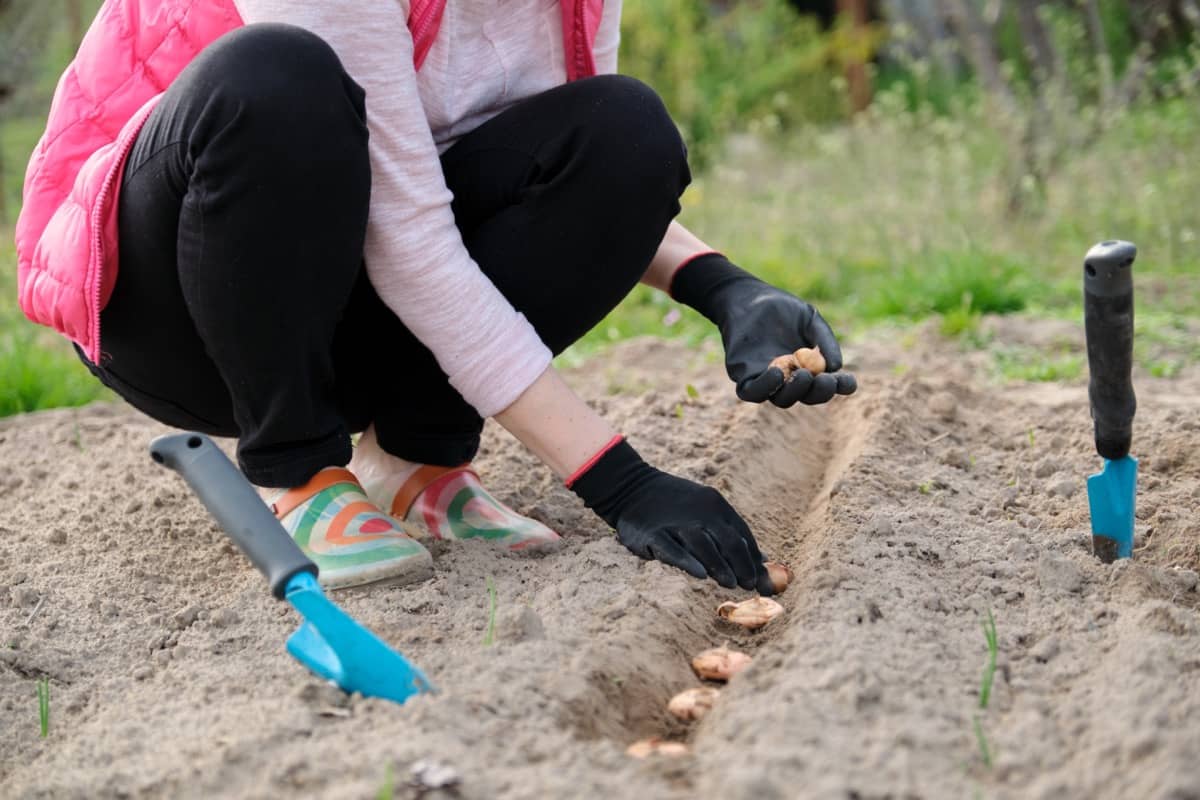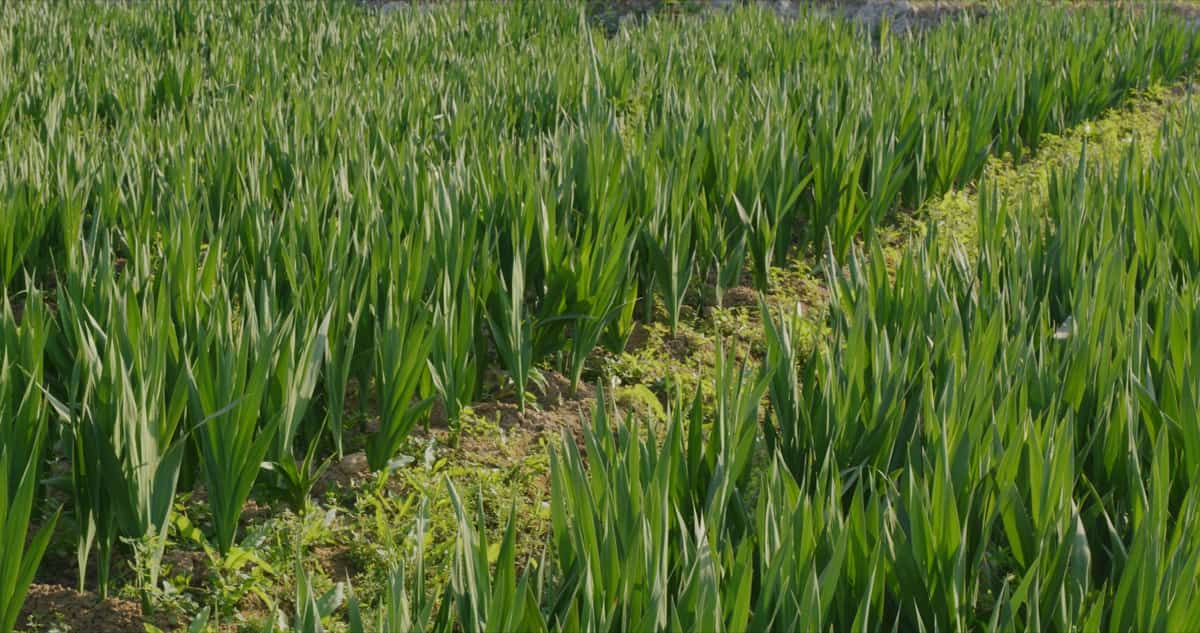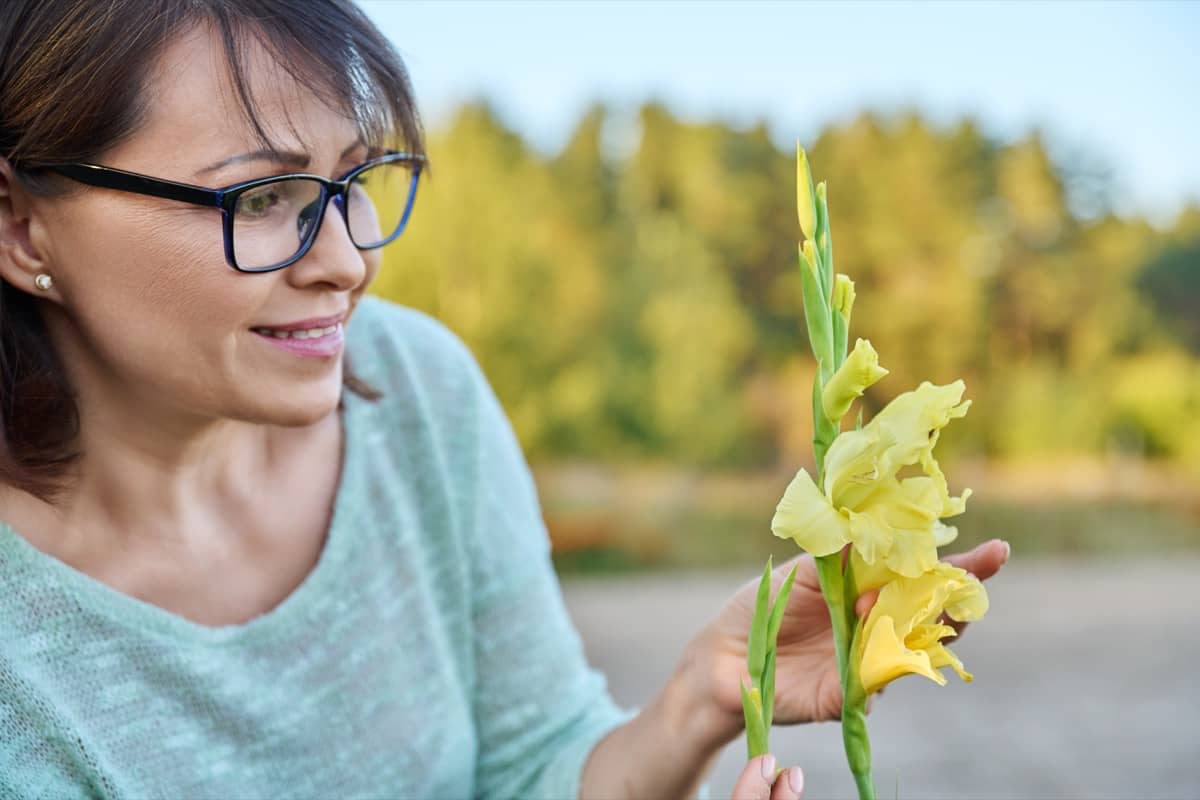Gladiolus can be grown in most climates. They make a beautiful addition to borders or areas within your garden. Gladiolus flowers come in many colors, including pink, red, purple, yellow, and white. Gladiolus is a popular choice for gardeners who want bright, brilliant flowers in their yards. These flowers come in various colors and can bring beauty to any space. And while Gladiolus is easy to grow, there are a few tips to help ensure they thrive in your garden.

How to grow and care for Gladiolus flowers
Types of Gladiolus plants
- Elvira – Elvira is a proud member of the Gladiolus family and has a long history of being cultivated as an ornamental plant. Gladiolus varieties are available in many colors and shapes and can be grown as annuals or perennials. They are easy to care for and do well in most garden climates.
- Blue Moon – Blue Moon Gladiolus has lavender-blue flowers that are a beautiful contrast to other varieties. The most popular Gladiolus variety is the Blue Moon, which grows between 1 and 2 feet tall and has bright blue petals with a lighter center.
- Baccara – The Gladiolus is a popular flower and can be found in many colors and styles. There are many varieties of Gladiolus, each with its unique scent and flavor. One of the most popular types of Gladiolus is the Baccara. The Baccara is a beautiful pink petal with a deep purple center.
In case you missed it: 13 Popular Houseplants with White Flowers: You Should Add to Your Home

Climate suitable for growing Gladiolus in the garden
Gladiolus flowers are popular for gardeners looking to add some color. These plants are tolerant of various soil types and can thrive in the sun and shade. Gladiolus plants can also be grown as annuals, but they produce their most vibrant flowers when grown as perennials. The temperature requirement for growing Gladiolus is about 20 to 25°C degrees Fahrenheit. Gladiolus are heavy feeders and will not flower well if temperatures are below 16°C.
Most Gladiolus can tolerate a few degrees of frost but should be protected from severe cold weather. The best way to ensure proper Gladiolus temperatures is to grow them in a greenhouse or conservatory during the cooler months. Gladiolus flowers are typically blue, purple, or pink and come in many different sizes and shapes.
They can be grown in various climates but are especially suited to temperate zones. One of the best things about Gladiolus is that they need very little care once planted in the garden. They will grow slowly in the beginning but will eventually fill out their foliage and bloom lavishly.
Soil requirement for growing Gladiolus in the garden
Gladiolus can be grown in gardens year-round. Their requirements for soil and care are similar to other bulbs, but they do best in well-drained soil with some organic matter. In the garden, Gladiolus should be placed where they will receive full sun exposure and good air circulation. A good loam mix will have high organic content and adequate drainage and fertilization. Add plenty of organic matter to your soil before planting Gladiolus.
In case you missed it: 25 Flowers for Container Gardening: Top Best List and Easy for Beginners

Gladiolus prefers well-drained soil rich in organic matter and has a pH of 6.0 – 7.5. They also appreciate full sun and regular moisture but do not tolerate wet soil or exposure to frost. When growing Gladiolus in the garden, adjust your watering schedule according to rainfall rates and soil moisture levels.
Water requirement for growing Gladiolus in the garden
To grow Gladiolus flowers successfully in your garden, you must provide them with a steady water supply. The plants normally tolerate moderate drought, but they will perform better if you give them frequent watering. You should water Gladiolus plants thoroughly when the soil is dry and wait several hours before watering again. If you allow the soil to become too dry, the plants may start to wilt and lose their color.
Gladiolus flowers are perennials that require much water to grow and thrive. The water requirement for Gladiolus is typically around 30-40 gallons per week, though some varieties may need up to 60 gallons per week. Because Gladiolus roots are shallow, you want to amend the potting soil with plenty of organic matter before adding the Gladiolus plants. Add compost or aged manure before watering your plants. Water the plants regularly, making sure to water deeply and allow the soil to dry out between waterings.
Propagating Gladiolus
From seed
Gladiolus is one of the most popular flowers in the world. There are many types of Gladiolus, so you should choose the right one for your garden. Start by choosing a Gladiolus variety suited for your climate and soil type. Some varieties do better in warm climates, while others prefer colder environments. Select a sunny spot in your garden for planting your seeds. Use a fine layer of soil to cover the seeds.
Make sure there is plenty of space between each plant so they can grow tall and flowers can spread out. Water your Gladiolus sparingly until they germinate, then give them regular water through the germination process and afterward, as needed. Overwater causes the plants to become soft and may even kill them. Once the plants have germinated, thin them out slightly, so they all have enough space to grow and flower freely.
In case you missed it: Cool-season Plants for Pollinators: Vegetables, Flowers, Fruits, Shrubs, and Herbs

From corms
Gladiolus prefers moist, well-drained soil and full sun. Propagating Gladiolus from corms is a simple process that can be done in early spring or late fall. First, remove the old corm to propagate a Gladiolus corm from the plant. Cut off the base of the corm and discard it. Then carefully cut off both ends of the corm and separate them into two halves.
Make sure to save the top section of each half so you can plant it back on top of the new Gladiolus plant later on. Place these halves into fresh soil and water them well. Gladiolus will take about six weeks to grow new roots and will be ready to transplant into your garden once they have developed several sets of leaves.
Gladiolus plant care
Fertilizer requirement for growing Gladiolus in the garden
Gladiolus needs a modest amount of fertilizer to grow well. Supplemental phosphorus can be given in the form of a spray or granules. Water Requirements Gladiolus need regular watering during the growing season but do not overwater them. Keep soil moist but not soggy. During the growing season, fertilize with a light fertilizer application every two weeks and once a month while they are dormant in winter.
Organic fertilizer may be best if your plant is in a cold climate or near other frost-sensitive plants. These fertilizers typically contain high nitrogen, phosphorous, and potassium levels, which are important for promoting growth. Garden soil can also be used in cold climates if you’re careful about watering (more on that later). Just be sure to add more nutrients with regular garden soil because it’s not as rich in nutrients as organic matter.
Regular garden soil may be adequate if your plant is in a warm climate or other plants nearby don’t need as much water (or if you prefer to water less often). Mix in some composted manure whenever possible for added nutrients and microbial activity. Bacteria have already broken-down composted manure and contain plenty of minerals like nitrogen and phosphorus, which can help promote growth.
Gladiolus plant care in winter
In the colder months, taking care of your Gladiolus plants is important to keep them healthy and happy. Gladiolus prefer a lot of light and warmth, so make sure to place them where they will get plenty of both. You can provide supplemental light by placing a fluorescent tube near the plant or use a grow light if available.
In case you missed it: Soil pH Levels for Vegetables, Fruits, Flowers, and Herbs: How to Lower and Increase Soil pH, Chart and Optimum Range

Water your Gladiolus regularly, especially in the winter when humidity is low. Use a water-soluble fertilizer when planting in the ground and every two weeks after that while they are growing. If you live in cold winters, protect your plants with a sheet of plastic wrap during winter. Make sure to remove any dead or damaged branches and stop fertilizing for three weeks before doing so to encourage new growth.
Pruning Gladiolus plant
To maintain a Gladiolus flower plant, pruning is necessary. Pruning removes dead and damaged leaves and branches to promote healthy growth. Dead or damaged branches can also cause the Gladiolus flower plant to droop. Remove unhealthy-looking leaves and branches at the base of the stem with a sharp knife. Cut back flowering stems in late summer to keep plants compact and blooming for longer. To prune a Gladiolus flower plant, you will need a pair of sharp shears, sturdy gloves, and a garden trowel.
Pests and diseases of Gladiolus in the garden
Three main pests and diseases affect Gladiolus flowers: aphids, whiteflies, and root rot. Aphids are soft-bodied insects that feed on plant sap. They can cause green leaves to turn yellow and drop off the plant. Whiteflies are small, light brown, or black flies that feed on nectar and pollen. They can cause damage by sucking the juice from flowers, leaving them stunted or wilted. Root rot is a fungus that attacks Gladiolus plants from the inside out.
It causes the roots to dry up and die. There is not always a definite sign that a Gladiolus plant is infected with root rot; however, the leaves will gradually become yellow and drop off the plant. To deal with pests and diseases in your garden, begin by scouting for signs of trouble early on. Look for drooping leaves or flowers, damaged areas near the base of the plant, or discolored leaves or petals.
In case you missed it: How to Grow Flowers in Winter in India: Planting, and Care

If you see any of these symptoms, act immediately by treating the affected area with an Insecticidal soap spray or a fungicide spray specifically designed for gardens. Be sure to follow instructions carefully to avoid damaging your plants further. Once you have managed to rid your garden of pests and diseases using traditional means, consider using organic pesticides if available. These products work by damaging insects’ nervous systems instead of their bodies.
Harvesting Gladiolus flowers
Gladiolus flowers are the perfect addition to any garden. They can be grown in various soils and climates, making them a great choice for anyone looking for an easy-to-grow flower. Gladiolus flowers can be harvested anytime during the bloom season, but they are most fragrant and vibrant when harvested young. To harvest Gladiolus flowers, cut away the spent blooms from the plant and then clip off the stem near the base of the flower.
Conclusion
Gladiolus is one of the easiest plants to grow in a garden. If you increase your chances of success, make sure to give your Gladiolus plants a good amount of sun exposure and keep them well-watered during spells of hot weather. Whether you are a beginner gardener or have been growing plants for years, Gladiolus flowers can be a challenging and rewarding addition to your garden. Follow these tips on growing and caring for Gladiolus in your garden so that you can enjoy their beauty for years to come.
- Flower Garden Designs and Layouts for Beginners
- Planting and Spacing Techniques in Papaya: A Beginner’s Guide
- Growing Gold: Essential Techniques for Planting Pineapples
- How to Make Kalanchoe Plant Bushy: Home Remedies and Solutions
- 11 Reasons Why Your Gardenia is Not Blooming: Home Remedies and Solutions
- Eco Elegance: The Guide to Designing a Drought-Tolerant Landscape
- Gardening on a Slope: Strategies for Hillside Landscaping
- Nourish and Flourish: Top Organic Mulches for Thriving House Plants
- Everything You Want to Know about Indian Mogra Flower: Discover Uses and Growing
- Green Thumb Success: Expert Tips for Cultivating Greenhouse Pumpkins All Year Round
- Maximize Growth & Flavor: The Ultimate Guide to Companion Planting in Herb Gardens
- How to Control Rhododendron Problems Naturally: Home Remedies and Organic Ways to Fix Them
- Natural Magic: The Remarkable Benefits of Cinnamon for Plants
- Best Steps to Revive Dying Tulip with Natural and Organic Treatment
- 10 Reasons Why Your Angel Trumpet is Not Blooming: Remedies and Treatment
- How to Fix Periwinkle Leaf and Flower-Related Problems: Natural Remedies and Solutions
- How to Fix Zinnias Leaf and Flower Problems: Discover Natural and Home Remedies
- Organic Steps to Induce Lemon Tree Flowers: A Comprehensive Guide
- Bloom Booster: Crafting the Perfect Homemade Bougainvillea Fertilizer
- Optimizing Growth: A Guide to Applying NPK Fertilizer for Potted Plants
- 10 Best Homemade Fertilizers for Rubber Plant: DIY Recipes and Application Method
- How to Boost Female Pumpkin Flowers: Effective Steps for More Flowers and High Yields
- Transform Your Indoor Garden: Top Benefits of Pink Salt for Houseplants
- 10 Best Homemade Fertilizers for Peacock Plants (Calathea): Easy DIY Guide
- Unlock Blooms: 9 Reasons Why Your Potted Chrysanthemum is Not Blooming
- 8 Reasons Why Your Potted Hibiscus is Not Blooming: Fix it with Simple Solutions
- Unlock Blooms: 9 Key Reasons Your Potted Frangipani Won’t Flower
- 10 Reasons Why Is My Ice Plant Not Blooming: Remedies and Treatment
- 10 Reasons Why My Potted Hydrangea Not Blooming: Treatment and Remedies
- 10 Reasons Why is My Wisteria Not Blooming: Remedies and Treatment
- 10 Reasons Why is My Goldfish Plant Not Blooming: Remedies and Treatment
- Maximize Your Space: Ultimate Guide to Balcony Gardening with Grow Bags
- 10 Reasons Why Your Iris is Not Blooming: Remedies and Treatment
- 10 Reasons Why Your Anthurium Plant is Not Blooming: Treatment and Remedies
- 10 Reasons Why Your Aquaponic Plants Are Not Flowering: Remedies and Treatment
- 10 Reasons Why Your Agapanthus is Not Flowering: Remedies and Treatment